Abstract
Carbohydrate antigens from Candida albicans, essentially mannan, have previously been shown to persist in the serum of some patients with chronic mucocutaneous candidiasis, and to be able to inhibit specifically the candida antigen-induced proliferation of control lymphocytes. Lymphocytes from three out of six patients were shown to be hypersensitive to mannan inhibition. These data were explained by the demonstration of an apparently selective impairment of radiolabelled mannan handling by two patients' monocytes following a normal uptake. This defect was observed both in active and remission phases of the infection suggesting an intrinsic defect of patients' monocytes. In experiments performed with control lymphocytes, it was shown that mannan exerted its suppressive effect by interfering with candida antigen presentation by adherent cells to autologous T lymphocytes. Furthermore, mannan neither was cytotoxic nor induced suppressor T cells. Altogether, these data suggest that the in vivo persistance of mannan, in some patients, is secondary to a primary macrophage dysfunction leading to impairment of specific cellular immune responsiveness.
Full text
PDF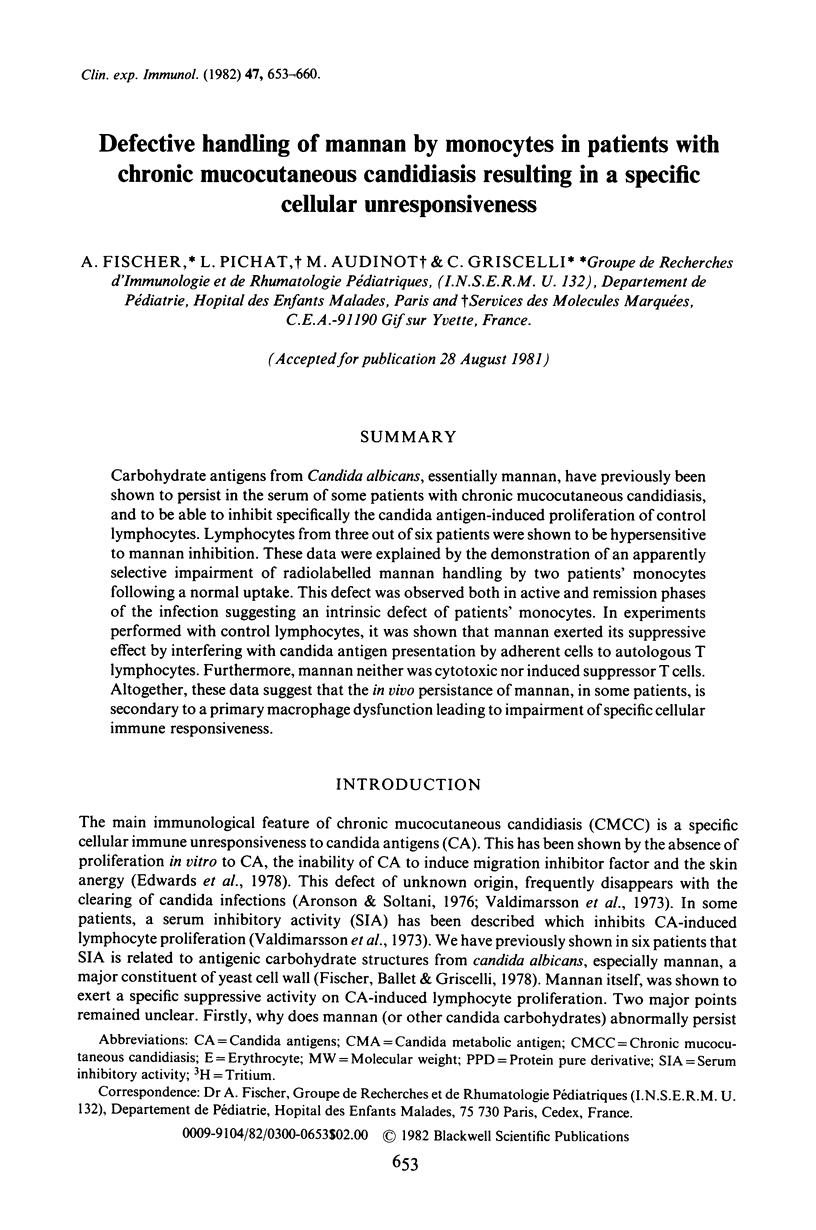
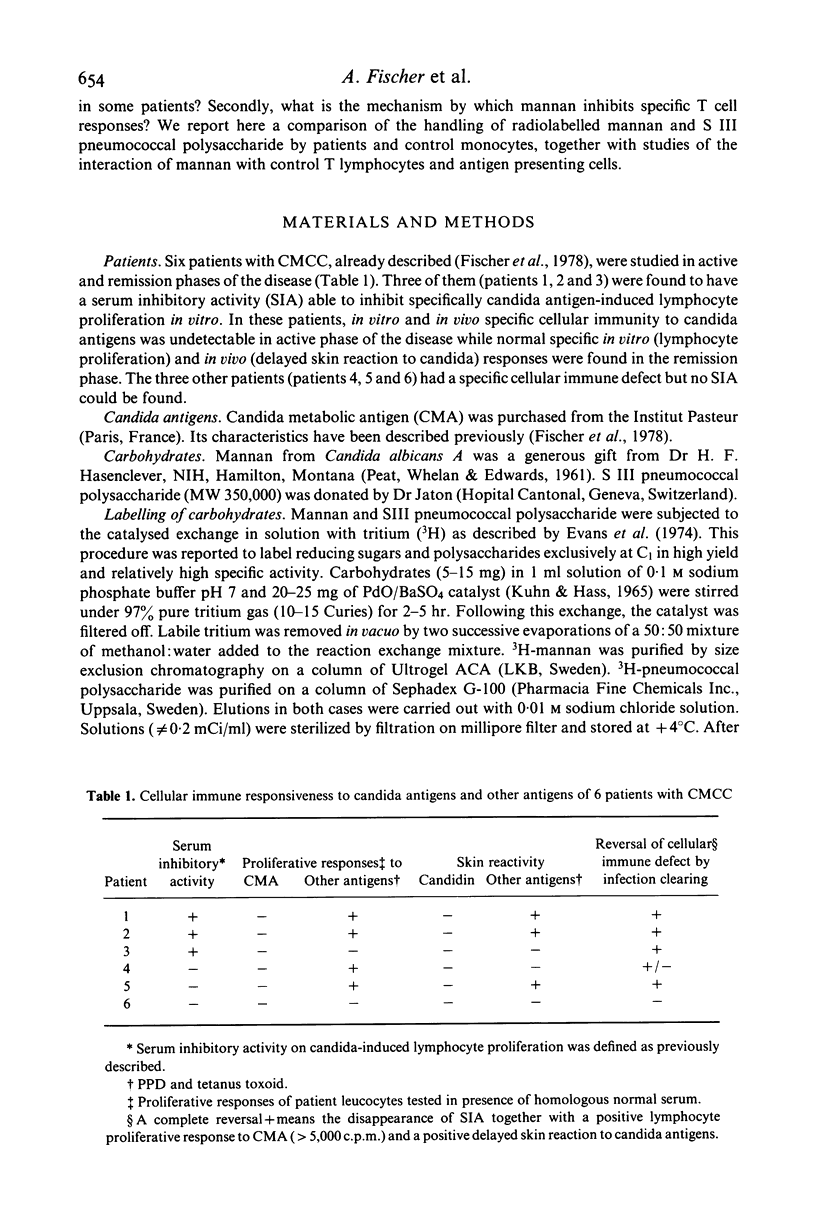
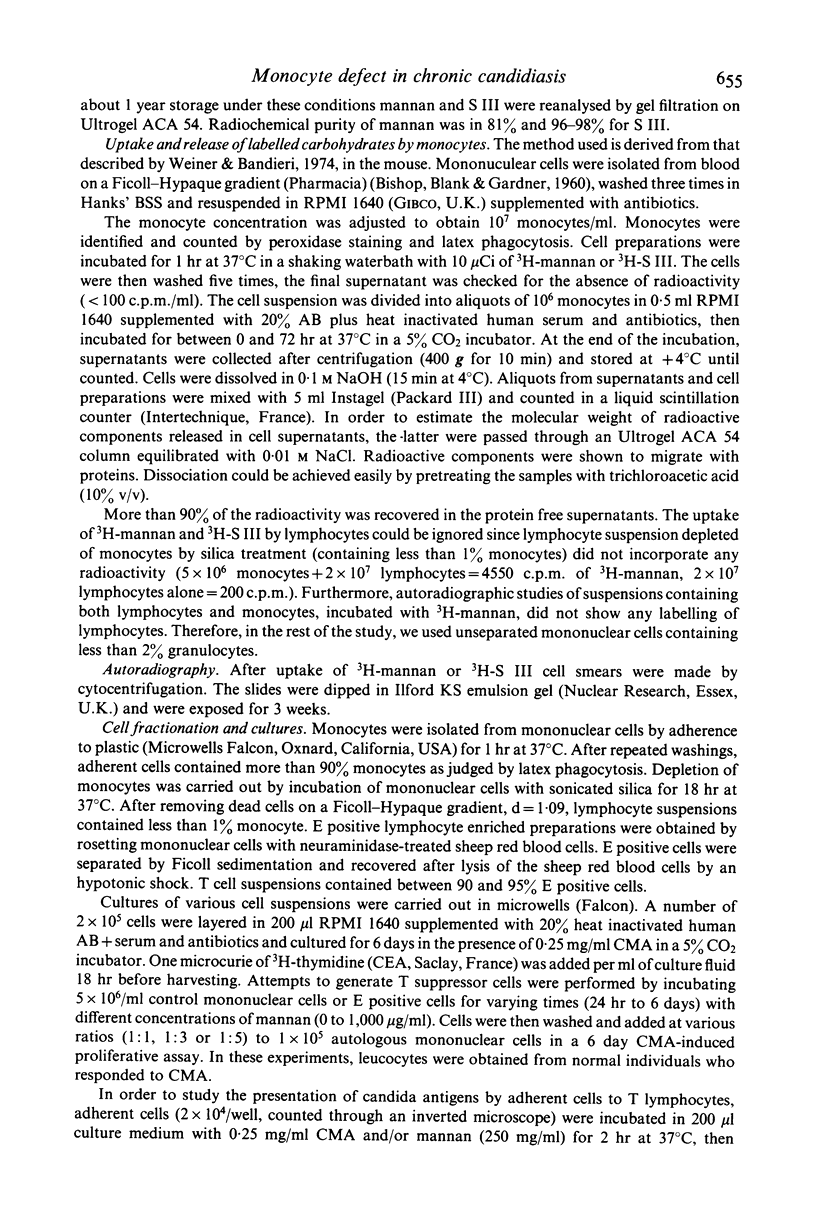
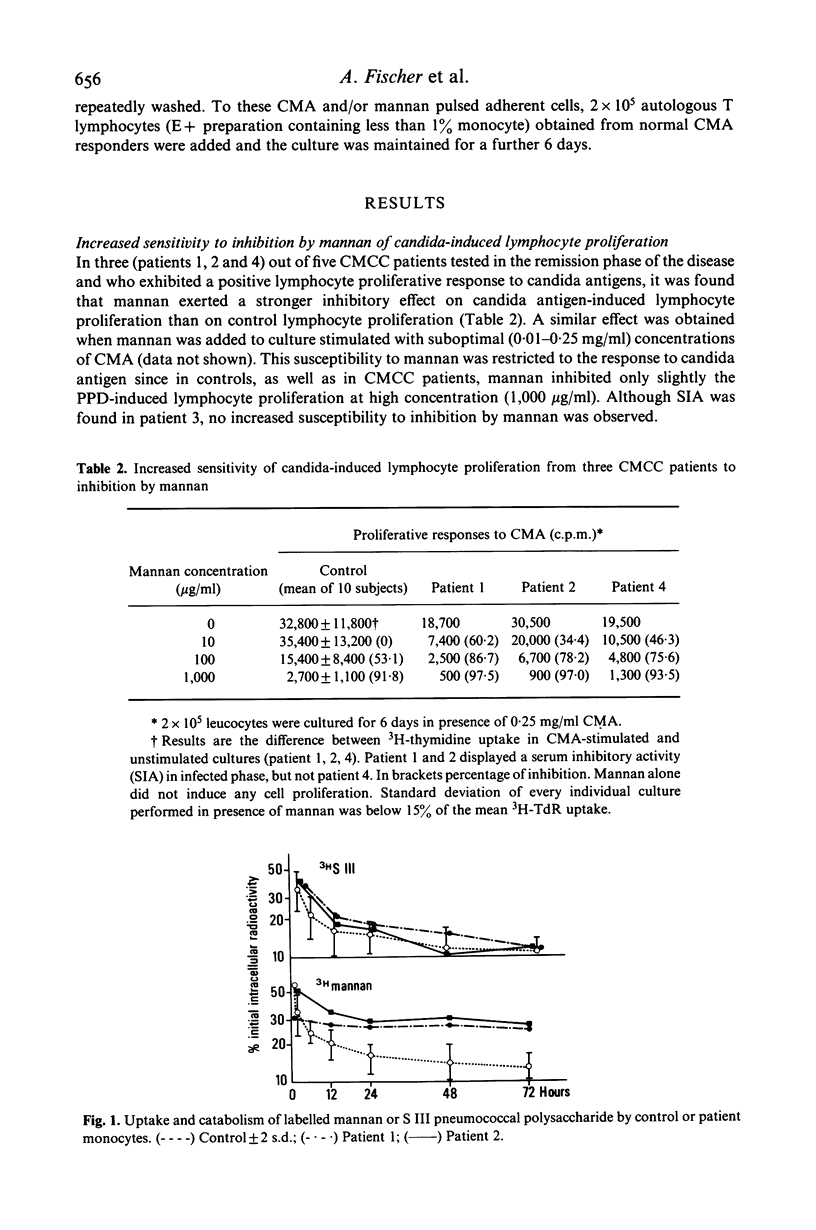
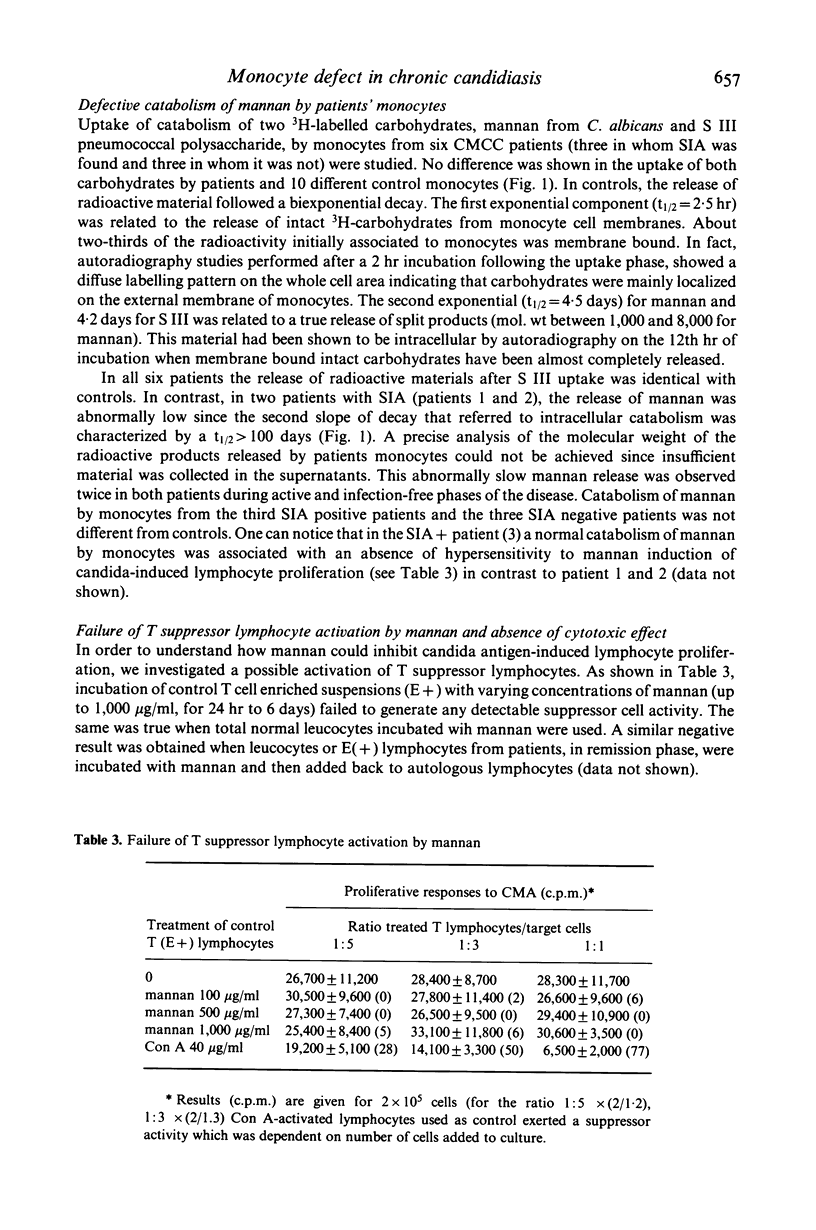
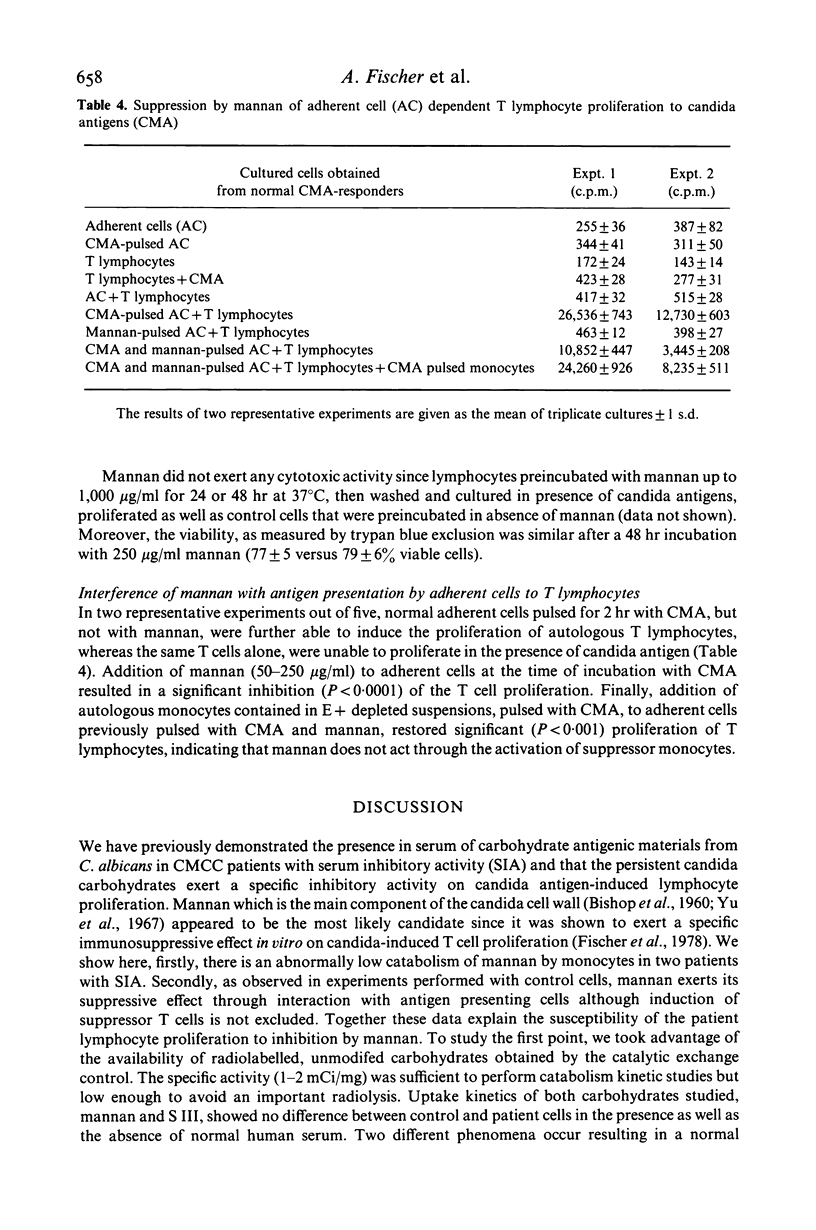
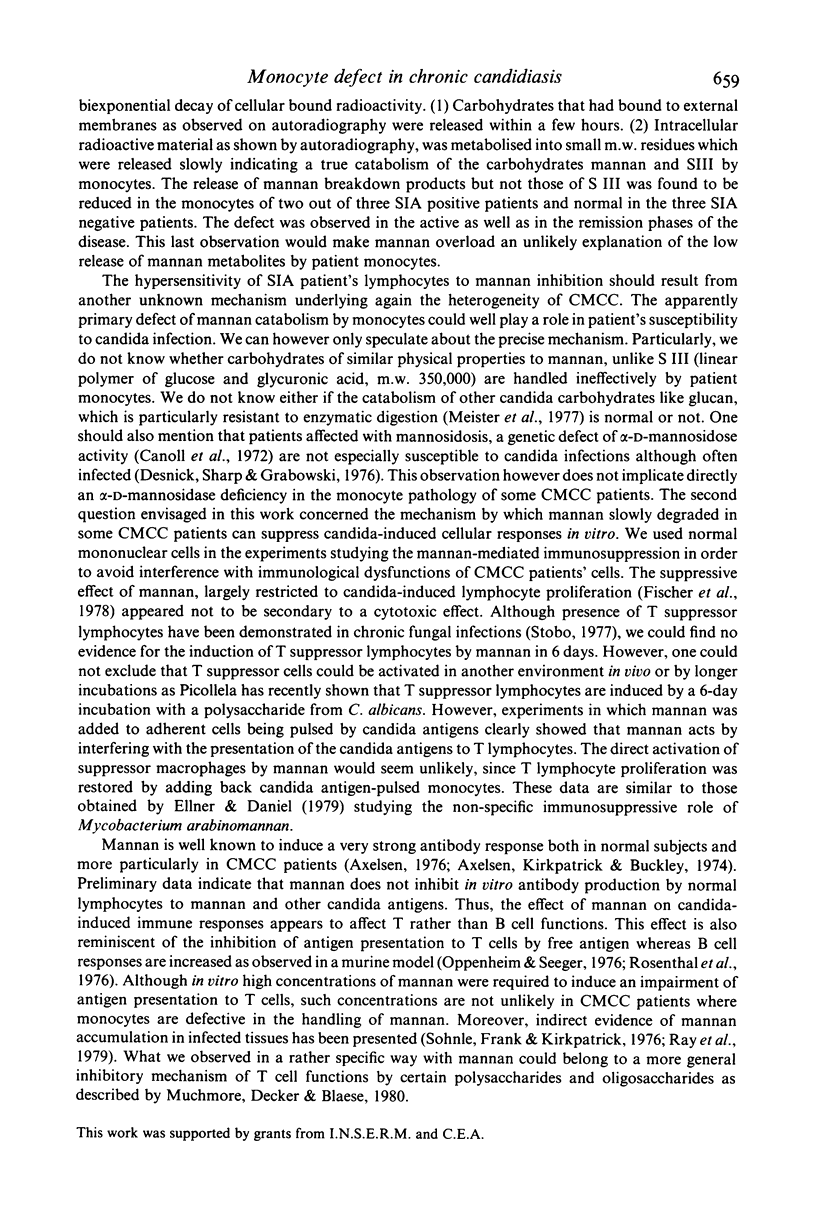
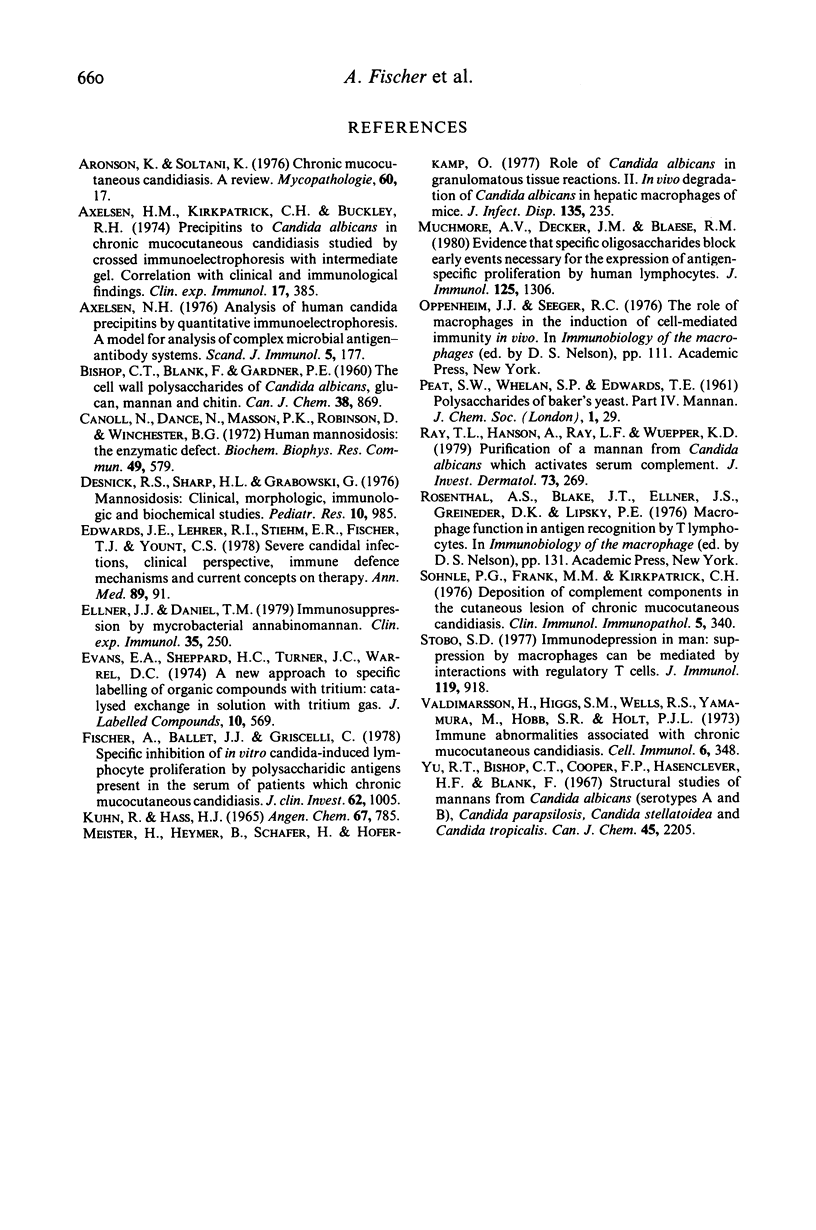
Selected References
These references are in PubMed. This may not be the complete list of references from this article.
- Aronson I. K., Soltani K. Chronic mucocutaneous candidosis: a review. Mycopathologia. 1976 Dec 10;60(1):17–25. doi: 10.1007/BF00442543. [DOI] [PubMed] [Google Scholar]
- Axelsen N. H. Analysis of human Candida precipitins by quantitative immunoelectrophoresis: a model for analysis of complex microbial antigen-antibody systems. Scand J Immunol. 1976;5(3):177–190. doi: 10.1111/j.1365-3083.1976.tb00268.x. [DOI] [PubMed] [Google Scholar]
- Axelsen N. H., Kirkpatrick C. H., Buckley R. H. Precipitins to Candida albicans in chronic mucocutaneous candidiasis studied by crossed immunoelectrophoresis with intermediate gel. Correlation with clinical and immunological findings. Clin Exp Immunol. 1974 Jul;17(3):385–394. [PMC free article] [PubMed] [Google Scholar]
- Carroll M., Dance N., Masson P. K., Robinson D., Winchester B. G. Human mannosidosis--the enzyme defect. Biochem Biophys Res Commun. 1972 Oct 17;49(2):579–583. doi: 10.1016/0006-291x(72)90450-0. [DOI] [PubMed] [Google Scholar]
- Desnick R. J., Sharp H. L., Grabowski G. A., Brunning R. D., Quie P. G., Sung J. H., Gorlin R. J., Ikonne J. U. Mannosidosis: clinical, morphologic, immunologic, and biochemical studies. Pediatr Res. 1976 Dec;10(12):985–996. doi: 10.1203/00006450-197612000-00008. [DOI] [PubMed] [Google Scholar]
- Edwards J. E., Jr, Lehrer R. I., Stiehm E. R., Fischer T. J., Young L. S. Severe candidal infections: clinical perspective, immune defense mechanisms, and current concepts of therapy. Ann Intern Med. 1978 Jul;89(1):91–106. doi: 10.7326/0003-4819-89-1-91. [DOI] [PubMed] [Google Scholar]
- Ellner J. J., Daniel T. M. Immunosuppression by mycobacterial arabinomannan. Clin Exp Immunol. 1979 Feb;35(2):250–257. [PMC free article] [PubMed] [Google Scholar]
- Fischer A., Ballet J. J., Griscelli C. Specific inhibition of in vitro Candida-induced lymphocyte proliferation by polysaccharidic antigens present in the serum of patients with chronic mucocutaneous candidiasis. J Clin Invest. 1978 Nov;62(5):1005–1013. doi: 10.1172/JCI109204. [DOI] [PMC free article] [PubMed] [Google Scholar]
- Muchmore A. V., Decker J. M., Blaese R. M. Evidence that specific oligosaccharides block early events necessary for the expression of antigen-specific proliferation by human lymphocytes. J Immunol. 1980 Sep;125(3):1306–1311. [PubMed] [Google Scholar]
- Ray T. L., Hanson A., Ray L. F., Wuepper K. D. Purification of a mannan from Candida albicans which activates serum complement. J Invest Dermatol. 1979 Oct;73(4):269–274. doi: 10.1111/1523-1747.ep12531641. [DOI] [PubMed] [Google Scholar]
- Sohnle P. G., Frank M. M., Kirkpatrick C. H. Deposition of complement components in the cutaneous lesions of chronic mucocutaneous candidiasis. Clin Immunol Immunopathol. 1976 May;5(3):340–350. doi: 10.1016/0090-1229(76)90043-x. [DOI] [PubMed] [Google Scholar]
- Stobo J. D. Immunosuppression in man: suppression by macrophages can be mediated by interactions with regulatory T cells. J Immunol. 1977 Sep;119(3):918–924. [PubMed] [Google Scholar]
- Valdimarsson H., Higgs J. M., Wells R. S., Yamamura M., Hobbs J. R., Holt P. J. Immune abnormalities associated with chronic mucocutaneous candidiasis. Cell Immunol. 1973 Mar;6(3):348–361. doi: 10.1016/0008-8749(73)90035-x. [DOI] [PubMed] [Google Scholar]


